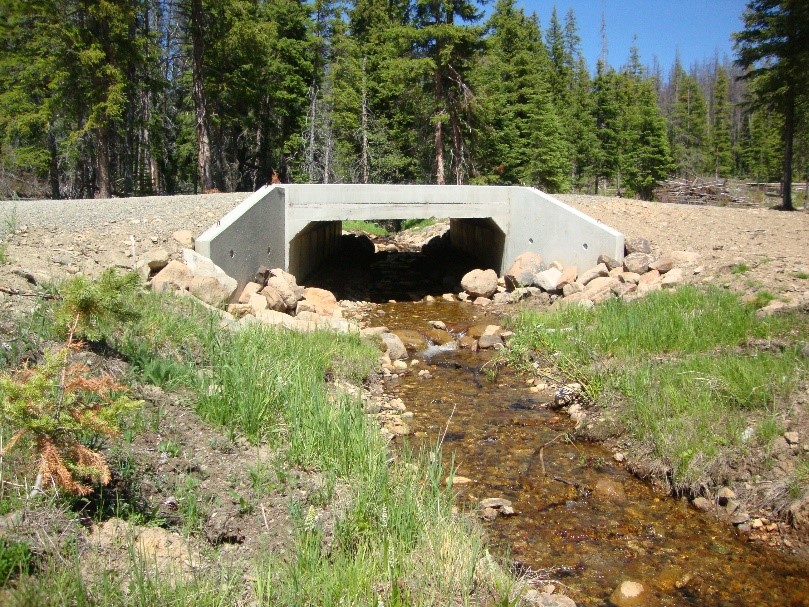As an expert in environmental science, I have long been intrigued by the unique and invaluable role that wetlands play in stormwater management. These ecosystems, often overlooked and undervalued, act as nature’s own filtration system, effectively removing pollutants and sediments from stormwater runoff. In this article, I will explore the crucial functions wetlands perform in managing stormwater, the benefits they bring to both human and natural systems, and the pressing need to protect and restore these invaluable habitats. Prepare to be amazed by the exceptional capabilities of these seemingly humble yet incredibly powerful landscapes.

1. Introduction
Definition of wetlands
Wetlands are areas of land that are characterized by the presence of water, either permanently or seasonally, and by the unique plant and animal life that thrives in these conditions. They can be found in a variety of environments, including marshes, swamps, and bogs. Wetlands play a crucial role in the natural landscape, providing numerous ecosystem services and benefits.
Importance of stormwater management
Stormwater management is the process of controlling and diverting excess rainwater from built-up areas to prevent flooding and protect water quality. As urbanization continues to increase, the importance of effective stormwater management becomes even more critical. Wetlands play a key role in this process, acting as nature’s own filtration system by capturing, storing, and gradually releasing stormwater, while also improving water quality through natural processes.
2. Benefits of Wetlands in Stormwater Management
2.1 Water Quality Improvement
One of the significant benefits of wetlands in stormwater management is their ability to improve water quality. As stormwater flows into wetlands, it undergoes a series of natural processes that help to remove pollutants and contaminants. The vegetation present in wetlands absorbs nutrients like nitrogen and phosphorus, which are common pollutants found in stormwater runoff. Additionally, the wetland soil acts as a filter, trapping sediments and pollutants before the water reaches downstream water bodies. This process helps prevent the contamination of drinking water supplies and promotes overall water quality.
2.2 Flood Control
Wetlands are effective in managing stormwater by acting as natural sponges that can absorb excess water during periods of heavy rain or flooding. The vegetation and soil in wetlands can hold large volumes of water, significantly reducing the chances of downstream flooding. As stormwater slowly seeps into wetlands, it is gradually released back into the ecosystem, reducing the peak flow rate and preventing overwhelming downstream infrastructure. This flood control function is especially crucial in urban areas where impervious surfaces, such as concrete, lead to rapid runoff and increased risk of flooding.
2.3 Erosion Prevention
Another benefit of wetlands in stormwater management is their ability to prevent erosion. When stormwater flows into wetlands, the dense vegetation present in these areas helps to slow down the water’s velocity, reducing its erosive power. Wetland plants have deep root systems that stabilize the soil, preventing the loss of topsoil and the erosion of stream banks. By reducing erosion, wetlands help maintain the integrity of waterways, protect infrastructure, and preserve the overall health of the ecosystem.
2.4 Groundwater Recharge
Wetlands also play a significant role in recharging groundwater, which is an essential water source for many communities. As stormwater infiltrates wetlands, it is gradually absorbed by the soil and replenishes underground aquifers. This recharge process helps to sustain water levels in aquifers, ensuring a reliable supply of groundwater for drinking water, agriculture, and other purposes. With increasing demands on water resources, the role of wetlands in recharging groundwater becomes increasingly important for long-term water sustainability.
2.5 Wildlife Habitat Preservation
In addition to their functions in stormwater management, wetlands also provide crucial wildlife habitat preservation. Wetlands are home to a wide variety of plant and animal species, many of which rely on these unique ecosystems for their survival. The diverse vegetation and water-filled habitats in wetlands support a wide range of wildlife, including migratory birds, amphibians, reptiles, and fish. By protecting and preserving wetlands, we ensure the conservation of these valuable habitats and the biodiversity they support.

3. Wetland Types and Their Functions in Stormwater Management
3.1 Natural Wetlands
Natural wetlands are wetland areas that have developed over time without significant human intervention. They can be found in various forms, including marshes, swamps, and bogs, each with its unique characteristics and functions in stormwater management.
3.1.1 Marshes
Marshes are wetlands characterized by the presence of non-woody vegetation, such as grasses and sedges. They are often found in coastal areas and along the edges of lakes and rivers. Marshes play a crucial role in stormwater management by promoting water quality improvement through the filtration of pollutants and sediments. The dense vegetation in marshes helps slow down stormwater flow, reducing the risk of flooding and erosion. Additionally, marshes provide important wildlife habitats, supporting a diverse range of plant and animal species.
3.1.2 Swamps
Swamps are wetlands characterized by the presence of woody vegetation, such as trees and shrubs. They are typically found in areas with stagnant or slow-moving water. Swamps play a vital role in stormwater management by acting as natural sponges that can absorb and store large volumes of water, reducing the risk of flooding downstream. The dense vegetation in swamps also helps to filter and purify stormwater, improving water quality. Swamps provide important habitats for a variety of plant and animal species.
3.1.3 Bogs
Bogs are wetlands characterized by their acidic and nutrient-poor conditions. They are often found in areas with high water tables and are typically dominated by unique plant species, such as mosses and shrubs. Bogs play a role in stormwater management by helping to regulate water levels and prevent flooding. The dense vegetation in bogs acts as a natural sponge, absorbing and retaining large amounts of water. Additionally, bogs contribute to water quality improvement by filtering pollutants and sediments from stormwater runoff.
3.2 Constructed Wetlands
In addition to natural wetlands, constructed wetlands are artificially created wetland systems designed to mimic the functions of natural wetlands. They are often used in urban areas where natural wetlands have been lost to development. Constructed wetlands can be implemented in different forms, including stormwater ponds, detention basins, infiltration systems, and combination systems.
3.2.1 Stormwater Ponds
Stormwater ponds are constructed wetlands specifically designed for stormwater management. They are designed to collect and hold stormwater runoff, allowing sedimentation and natural processes to remove pollutants and contaminants. Stormwater ponds are often landscaped with vegetation that further enhances water quality improvement and provides habitat for wildlife. These ponds are particularly effective in urban areas where space for natural wetlands is limited.
3.2.2 Detention Basins
Detention basins are another form of constructed wetlands used for stormwater management. They are designed to temporarily store stormwater runoff, controlling the release of water to prevent downstream flooding. Detention basins typically have a specific outlet structure that regulates the discharge of water. These basins can also provide water quality improvement benefits by allowing sedimentation and natural processes to remove pollutants before the water is released.
3.2.3 Infiltration Systems
Infiltration systems are constructed wetlands that are designed to promote the infiltration of stormwater into the ground. These systems typically include various components, such as porous pavement, bioretention areas, and subsurface infiltration chambers. Infiltration systems are effective in stormwater management as they help recharge groundwater, reduce the volume of stormwater runoff, and improve water quality through natural filtration processes.
3.3 Combination Systems
Combination systems involve the use of both natural and constructed wetlands to achieve multiple stormwater management goals. These systems utilize the strengths of both natural and constructed wetlands to maximize water quality improvement, flood control, and habitat preservation. Combination systems can be designed to incorporate different types of natural wetlands, such as marshes and swamps, along with specific constructed wetland features, such as stormwater ponds or infiltration systems.
4. How Wetlands Filter Stormwater
4.1 Physical Filtration
Wetlands filter stormwater through a process known as physical filtration. As stormwater flows into a wetland, the dense vegetation and underwater plants act as physical barriers, slowing down the water’s velocity. This reduction in flow rate allows suspended sediments and pollutants to settle out of the water column and be trapped within the wetland. The physical filtration process helps to remove larger particles and sediments, improving water clarity and quality.
4.2 Biological Filtration
Biological filtration is another important mechanism by which wetlands filter stormwater. Wetland vegetation, including plants and microorganisms, play a crucial role in this process. The roots of wetland plants provide a habitat for beneficial bacteria and other microorganisms that are responsible for breaking down and metabolizing pollutants in the water. These microorganisms help to remove nutrients, such as nitrogen and phosphorus, that can contribute to water pollution. The biological filtration process in wetlands enhances water quality and helps to maintain a healthy ecosystem.
4.3 Chemical Filtration
Wetlands also contribute to stormwater filtration through chemical processes. The composition of wetland soils, including organic matter and minerals, has the ability to bind and retain pollutants present in stormwater. Chemical reactions within the wetland sediments can remove or transform certain contaminants, reducing their concentration and making them less harmful to the environment. Chemical filtration in wetlands helps to improve water quality by removing pollutants like heavy metals and organic compounds.

5. Design and Management Considerations for Wetlands in Stormwater Management
5.1 Size and Location
When designing wetlands for stormwater management, careful consideration must be given to their size and location. The size of a wetland should be large enough to accommodate the expected volume of stormwater runoff while allowing sufficient time for natural processes to occur. The location of a wetland should be strategically chosen to intercept and capture stormwater before it reaches downstream water bodies or infrastructure. The placement of wetlands should take into account factors such as topography, hydrology, and existing land use patterns.
5.2 Vegetation Selection
The selection of vegetation for wetlands in stormwater management is crucial for their overall effectiveness. Native plant species are often preferred due to their ability to thrive in specific wetland conditions and provide optimal ecosystem services. The vegetation should be chosen for its ability to stabilize soil, promote water quality improvement, and provide habitat for wildlife. A diverse mix of plant species should be considered to maximize the benefits of wetlands in stormwater management.
5.3 Water Level Control
Water level control is an important aspect of wetland design and management for stormwater management purposes. Wetlands should be designed to accommodate varying water levels based on the expected volume of stormwater runoff. The installation of water control structures, such as weirs or gates, allows for the regulation of water levels within wetlands, ensuring optimal stormwater storage and retention. Proper water level control helps to prevent flooding and maintains the functionality of wetlands for stormwater management.
5.4 Nutrient Cycling
Nutrient cycling is a critical component of wetland design and management. Wetlands naturally cycle and process nutrients, such as nitrogen and phosphorus, which are common pollutants in stormwater runoff. By encouraging nutrient cycling, wetlands can help reduce the impact of these pollutants on downstream water bodies. Wetland design should include features that promote nutrient cycling, such as the addition of organic matter or the use of specific wetland plant species that are known for their ability to take up and sequester nutrients.
5.5 Maintenance and Monitoring
Regular maintenance and monitoring are essential for the long-term success of wetlands in stormwater management. Wetlands should be regularly inspected and maintained to ensure that they are functioning effectively and are free from obstructions or other issues that may hinder their performance. Monitoring programs should be established to assess water quality, vegetation health, and overall wetland functionality. It is important to identify and address any maintenance or management needs promptly to ensure the continued performance of wetlands in stormwater management.
6. Case Studies: Successful Implementation of Wetlands for Stormwater Management
6.1 Wetland Restoration Projects
Wetland restoration projects have been successfully implemented worldwide to enhance stormwater management and restore valuable ecosystems. One such example is the San Francisco Bay Wetland Restoration Program in California, where extensive wetland restoration efforts have been undertaken to improve stormwater management, enhance flood control, and restore critical wildlife habitats. These restoration projects have resulted in healthier wetlands, improved water quality, and increased resilience to climate change impacts.
6.2 Urban Wetland Design Examples
In urban areas, the incorporation of wetlands into stormwater management can pose unique challenges due to limited space and existing infrastructure. However, a number of innovative urban wetland design examples demonstrate the successful integration of wetlands into the urban environment. The Mill Creek MetroParks Wet Playground in Youngstown, Ohio, is an excellent example of an urban wetland designed to serve as a stormwater management facility while providing recreational and educational opportunities for the community. These examples highlight the potential of wetlands to enhance stormwater management in urban settings.
6.3 Community Engagement and Education
Successful implementation of wetlands for stormwater management often requires community engagement and education. Communities that are involved in the planning and design process of wetland projects are more likely to support and value these natural systems. For example, the Santa Clara Valley Urban Runoff Pollution Prevention Program in California has actively engaged community members in wetland restoration and stormwater management efforts through educational programs and volunteer opportunities. This community engagement has fostered a sense of ownership and stewardship, leading to the long-term success of wetland projects.
7. Challenges and Future Directions
7.1 Regulatory Considerations
The implementation of wetlands for stormwater management can be challenging due to regulatory considerations. Permitting, zoning, and land use regulations can vary significantly between jurisdictions, making it difficult to establish and maintain wetland systems. It is essential for policymakers and regulators to recognize the value of wetlands in stormwater management and develop flexible regulations that encourage their implementation. Streamlining the permitting process and providing incentives for wetland creation can help overcome these challenges.
7.2 Urbanization and Wetlands Preservation
The rapid pace of urbanization presents a significant threat to wetland preservation and stormwater management. As urban areas expand, wetlands are often lost to development or degraded due to increased pollution and altered hydrological patterns. Balancing the need for urban development with the preservation and restoration of wetlands requires careful planning and policy decision-making. Urban design strategies that integrate wetlands into the built environment can help mitigate the impact of urbanization on wetland ecosystems and enhance stormwater management.
7.3 Climate Change Adaptation
Climate change poses additional challenges to wetlands and their role in stormwater management. Rising sea levels, changes in precipitation patterns, and increased frequency of extreme weather events can impact the effectiveness and resilience of wetlands. Incorporating climate change adaptation strategies into wetland design and management is critical for ensuring their long-term functionality. This may involve incorporating additional flood control measures, enhancing wetland buffers, or considering the potential impacts of sea-level rise when locating and designing wetland systems.
8. Conclusion
Wetlands play a crucial role in stormwater management, acting as nature’s own filtration system. Their ability to improve water quality, control floods, prevent erosion, recharge groundwater, and preserve wildlife habitats make them valuable assets in urban and natural landscapes. By understanding the different types of wetlands, their functions, and their filtration mechanisms, we can design and manage wetlands effectively for stormwater management. Despite the challenges posed by urbanization and climate change, wetlands continue to offer significant opportunities for enhancing stormwater management and promoting the sustainability of our water resources. It is essential to recognize the importance of wetlands and prioritize their protection and restoration to reap the full benefits they provide.



